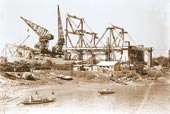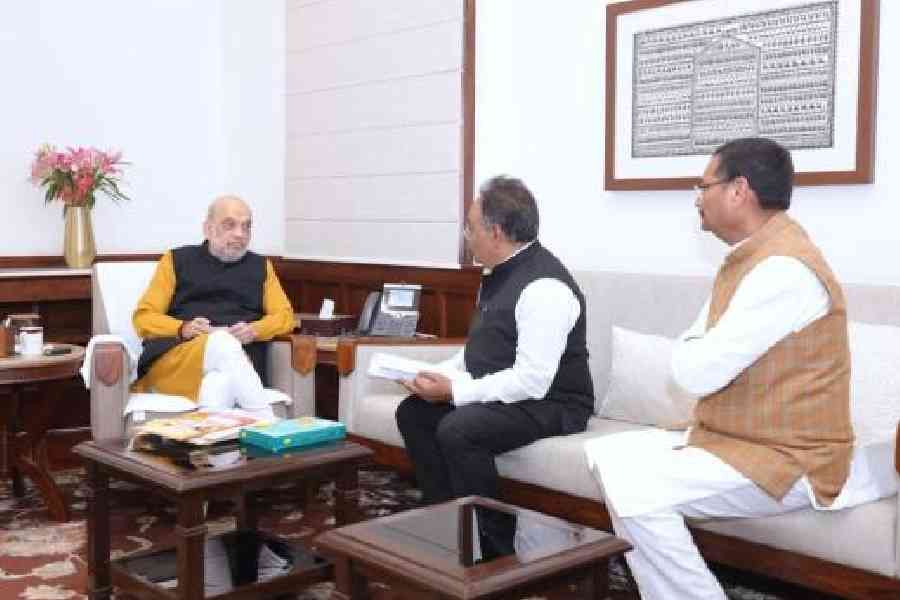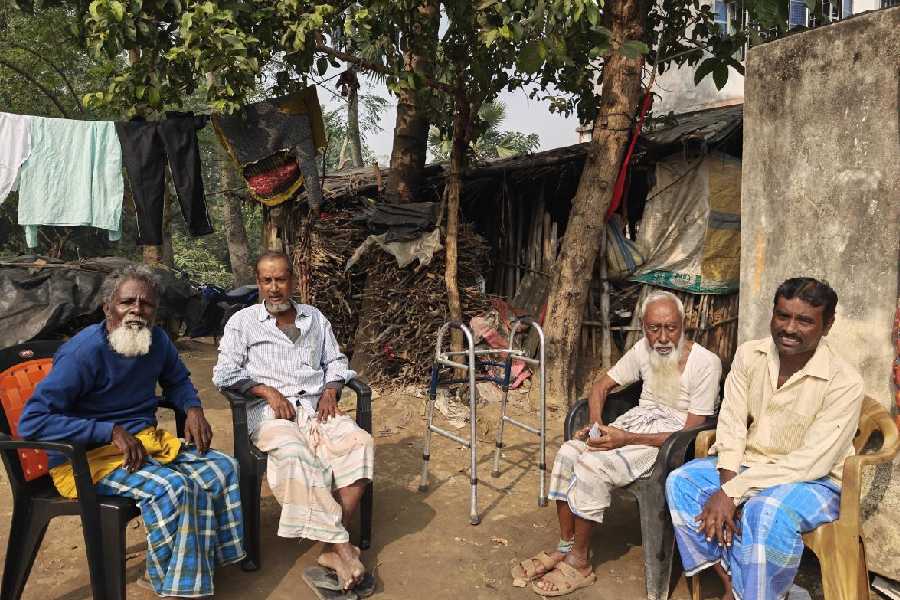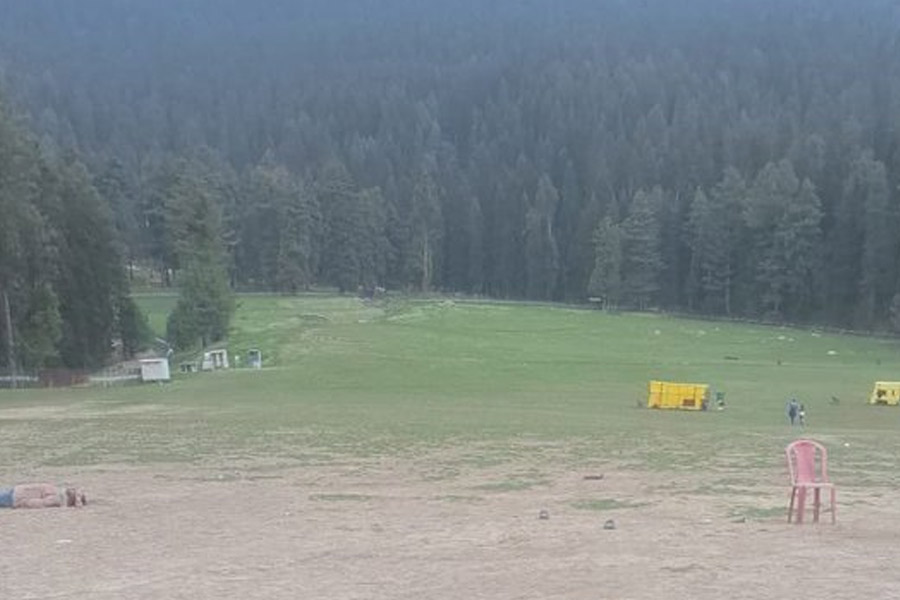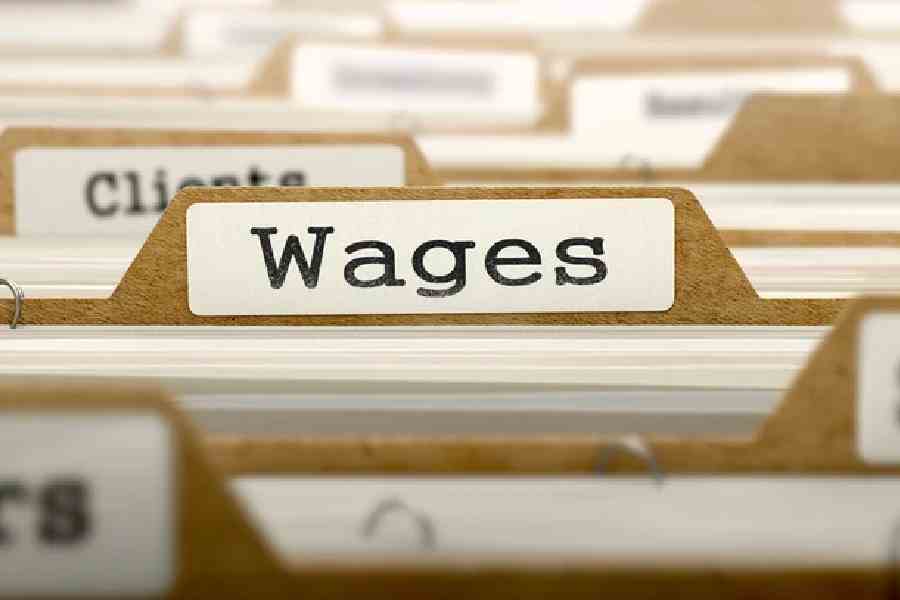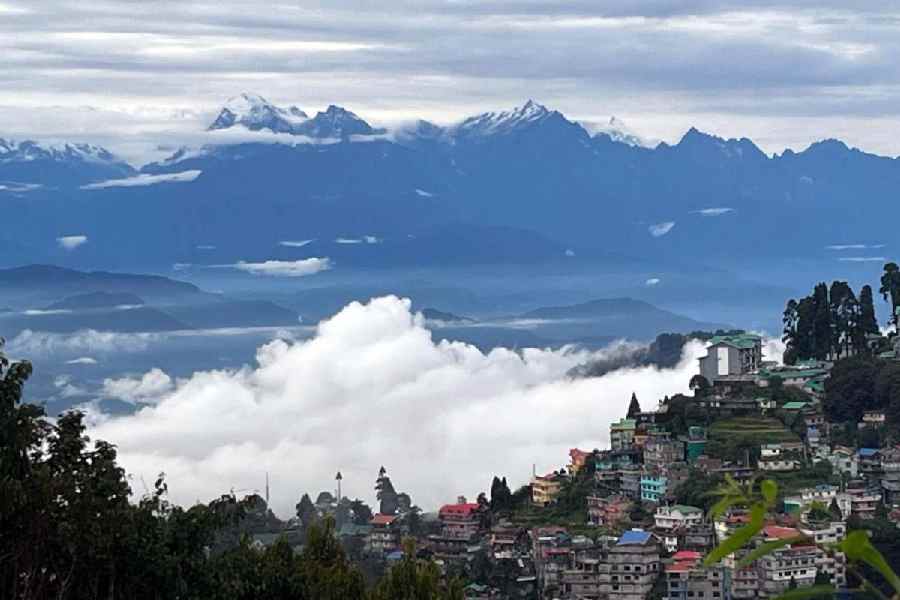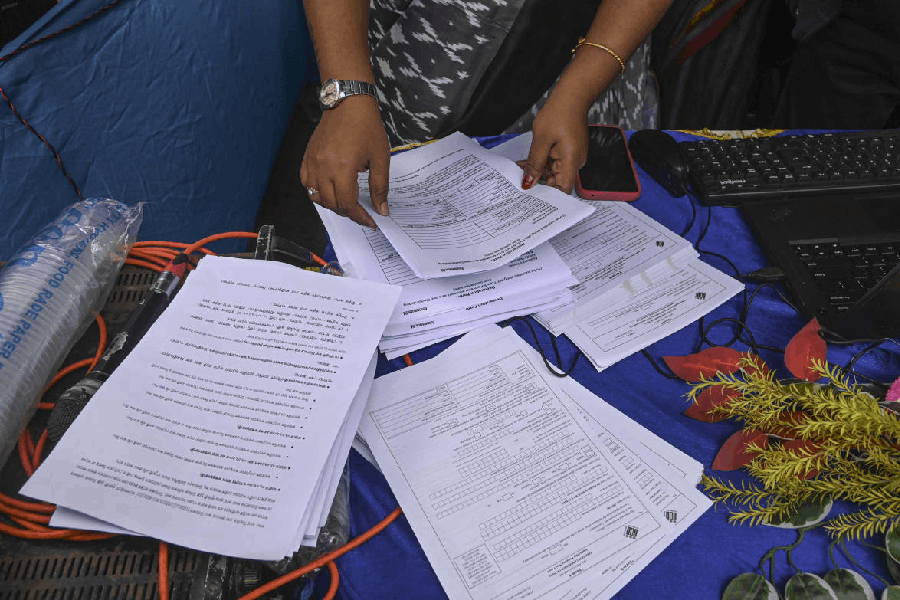 |
| The Howrah bridge under construction. A Telegraph picture |
Howrah bridge turns rainbow-hued these days after dark but the ground realities of the bridge that was opened to traffic in February 1943 are rather bleak. Men and women with vegetables and other ware open shop at either end of the bridge, and this could not be good news for an already fatigued bridge. However, in a city that is increasingly being overwhelmed by ugly highrises and shopping malls, both Howrah bridge and Vidyasagar Setu are pretty as a picture. But only an expert can determine whether they are in the pink of health or not.
Ever since the city of Calcutta began to develop in Job Charnock’s time, crossing the Hooghly had been a problem. A floating bridge was proposed in 1883 but it was rejected. A suspension bridge financed by Dwarkanath Tagore and Joykrishna Mukherjee never materialised. The railways came to Calcutta in 1854, and the booking office was at Armenian ghat. Steamers shuttled between Howrah and Calcutta as they do now. After the Howrah-Delhi rail link was established in 1866, such was the rush of passengers that it was too much of a burden for the ferry service and country boats.
Sir Bradford Leslie, who became chief engineer of the East India Railway after a stint with the Calcutta Corporation in a similar post, took up the task of bridging the gap five years later. So the wooden pontoon bridge that was meant to last 25 year but actually survived 75 years and built at a cost of Rs 18 lakh opened on October 17, 1874. Small boats could pass under the bridge at all times, but for the benefit of larger vessels heading for the docks, its central portion used to be floated, usually at night. The time of this operation was announced in newspapers everyday. Like Howrah bridge, the pontoon bridge, too, used to be blocked with a heavy flow of bullock carts, rickshaws, horse-drawn carriages and American cars. This bridge was dismantled after Howrah bridge was commissioned in 1945.
The bridge, particularly the wooden parts, had to be repaired several times. Thereafter, a six-member committee, including RN Mookerjee, recommended that a cantilever-type bridge replace the existing one. Maintenance of the pontoon bridge was such a costly affair that at last the Bengal government decided to do away with it. Randal, Palmer and Tritton prepared a design for a cantilever bridge of 1,500 ft span and with a fixed height.
The Cleveland Bridge Company of Darlington bagged the contract in 1936, although the quotation from Krupp’s of Germany was lower. Of the 26,500 tons used, 23,500 tons was supplied by the Tate Iron and Steel Company of Jamshedpur. The best non-corrosive type steel with a high percentage of copper was used. Braithwaite, Burn and Jessop Company, who joined hands for this project, were the fabricators.
When the two monoliths (about 180 ft by 81 ft in plan) were sunk to form the foundation of the main piers, ancient boats, cannons, and coins dating back to the time of John Company were discovered in the silt. At the work site, the British were the bosses but their assistants were Indians, and the labourers — skilled riveters and “khalasis” — were Hindus, Sikhs, Punjabis and Pathans. The monoliths sank all through the day at the rate of a foot or more a day. One particular night, the entire girth crashed in two feet at one go, causing a minor quake that was said to have been recorded on the seismograph in Kidderpore.
Work continued apace, short breaks for local festivals and the outbreak of World War II, notwithstanding. If eyewitnesses are to be believed, during World War II, anti-aircraft guns manned by manacled black men were kept on the ready at the base of the bridge to shoot down enemy aircraft. This was the time of the Japanese bombing in Calcutta. Although the major work was done at four different shops here, steelwork shipped from the UK had to brave the German submarines.
Thousands of people gaped at the mammoth construction work and the giant cranes weighing 610 tons each. Gradually the steel towers came up, and by 1940 the cantilever arms were being erected. The next year in December, the two halves of the suspended arms had met despite some technical glitches.
The media took no notice of the opening of the bridge, and not even the Calcutta Port Trust’s log book recorded it.

